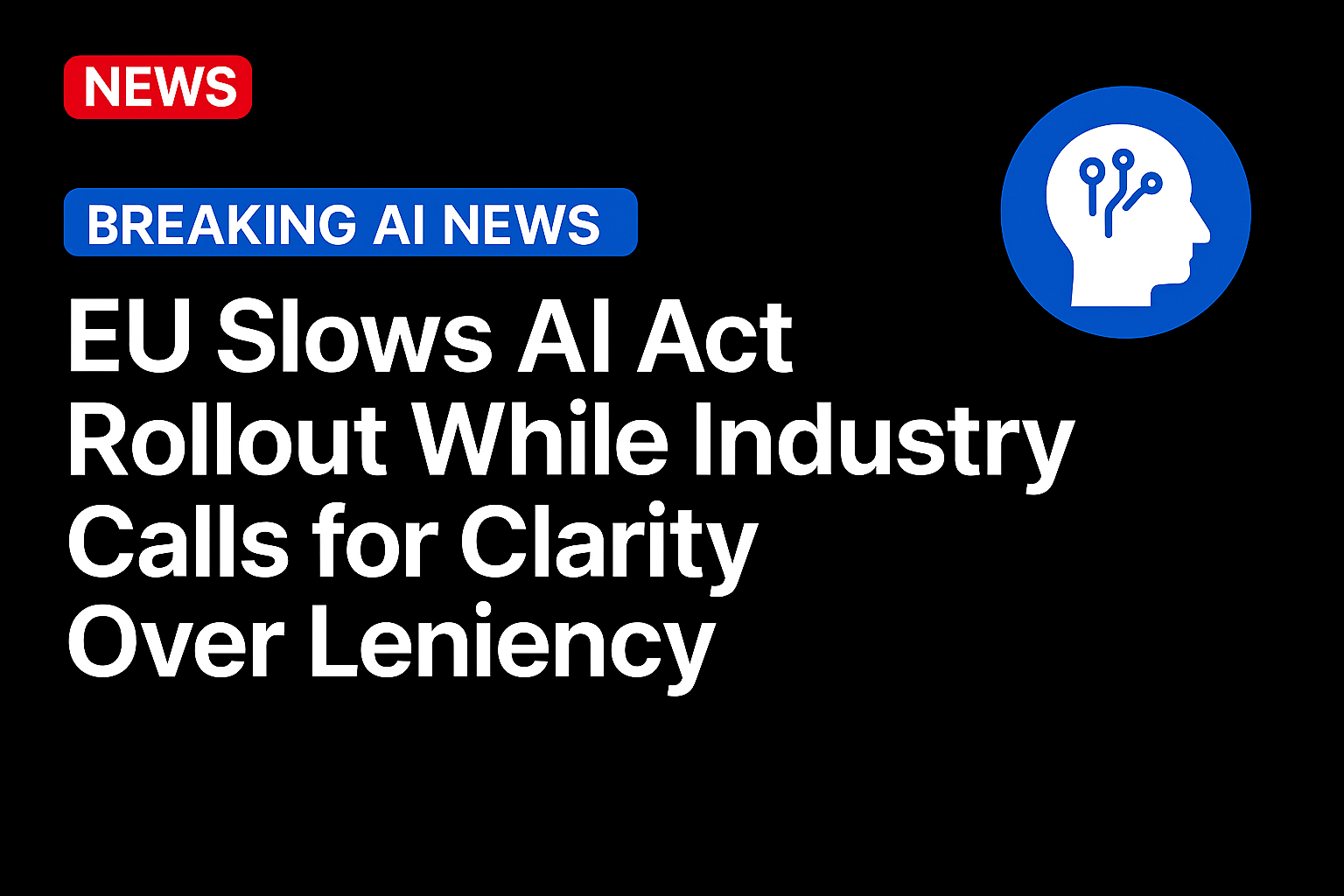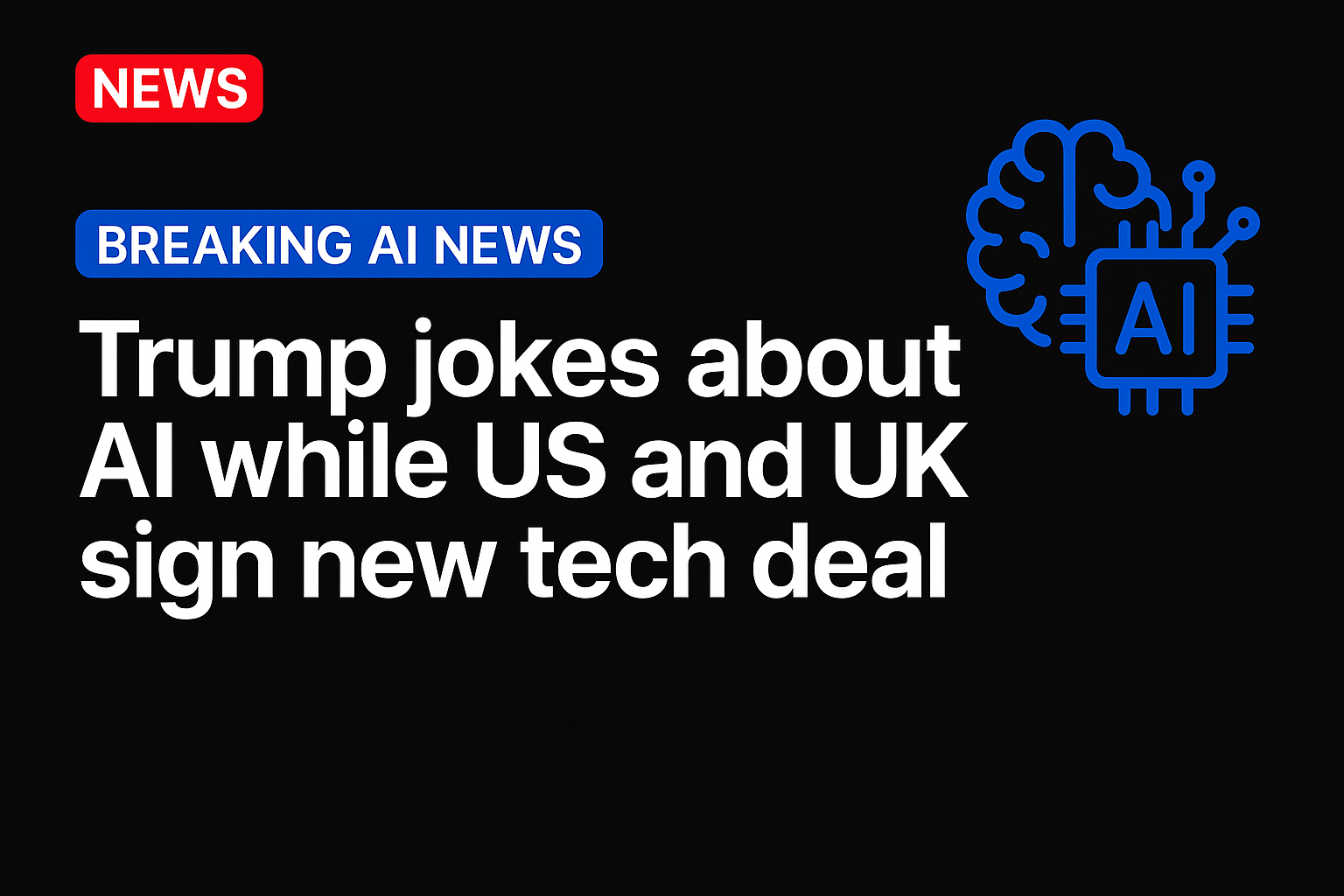
The European Union is preparing to delay and ease major elements of its landmark Artificial Intelligence Act as regulators confront a reality that fast-moving AI systems are outpacing the structures built to govern them.
According to Reuters, the European Commission is “proposing to pause parts of its landmark artificial intelligence legislation amid pressure from big tech companies and the U.S. government.”
The Financial Times reported that Brussels is considering a “one-year grace period for high-risk AI compliance” and may delay transparency fines until 2027. PYMNTS noted that policymakers are weighing a “yearlong delay in full implementation” as part of a broader effort to give European industries more time to adapt to the rapid rise of generative and autonomous AI systems.
Innovation Outruns Regulatory Timelines
The AI Act, which took effect in August 2024, was designed as the world’s first comprehensive legal architecture for artificial intelligence. As PYMNTS reported, the law “brings antitrust scrutiny to the heart of artificial intelligence governance” and seeks to regulate both the safety risks and the competitive dynamics surrounding advanced models and data access.
But the speed of innovation has complicated that ambition. PYMNTS earlier noted that OpenAI CEO Sam Altman warned EU lawmakers that the regulation “could limit access to AI” if implemented too rigidly, emphasizing that policymakers must avoid creating barriers at a time when foundational models are advancing rapidly.
Investors see the same tension playing out across Europe’s early-stage ecosystem. Kid Parchariyanon, founder and managing partner of SeaX Ventures, told PYMNTS that the commission’s reconsideration underscores challenges observed inside the startup market.
“AI is moving faster than any regulatory framework can and what we consistently see is that startups need clarity more than leniency. When regulations shift or timelines get pushed, it slows down hiring, partnerships and large-scale deployments, not because companies fear compliance, but because uncertainty is expensive.”
Parchariyanon said shifting deadlines come with risks of their own, especially for young companies trying to plan around uncertain rules. He noted that “longer compliance windows can be helpful if they give early-stage teams room to test and validate their models responsibly,” but warned that when those timelines keep changing, “they risk widening the gap between fast evolving AI systems and the rules meant to keep them accountable.”
As he told PYMNTS, innovation will continue regardless of regulatory timing. “It just moves to parts of the world where founders feel they can build with confidence.”
Why Governance Must Evolve
For regulatory technology platforms, the EU’s adjustment highlights a growing need for modern oversight tools. Stuart Lacey, founder and CEO of Labrynth, spoke with PYMNTS and described the shift as “a strategic recalibration.” He added that this move recognizes that AI innovation, particularly in frontier models and enterprise deployment, is outpacing traditional regulatory cadence.
Lacey said the EU’s shift reflects an important recalibration but added that timing changes on their own are not enough. “Delay alone does not ensure alignment,” he said, emphasizing that oversight must “evolve in parallel, with frameworks that are flexible yet enforceable.”
He explained that a risk-based model supported by human review can dramatically reduce regulatory friction, noting that it can “eliminate the 80% burden of time, delay and cost, leaving the 20% outcome.” Ignoring that approach, he cautioned, only increases the distance “between algorithmic power and public accountability.”
Enterprise governance leaders see similar pressures inside organizations. Anthony Habayeb, co-founder and CEO of Monitaur AI, told PYMNTS, “Extending the AI Act timeline is an acknowledgment that AI is evolving faster than most organizations’ ability to govern it. The technology is maturing at an exponential rate, while internal governance programs, documentation practices and enterprise readiness often move at a linear one.”
Habayeb said the extra time will only be useful if companies treat it as a chance to strengthen their internal guardrails rather than postpone them. He noted that “longer timelines can support more responsible and better tested systems,” but only when organizations use the window to build the governance and evidence structures, they will need “regardless of regulatory deadlines.”
He also emphasized that effective oversight must be built into the entire development cycle. The goal, he said, is to “shift governance left,” making oversight continuous, transparent and collaborative so it enables better business outcomes instead of slowing innovation.
Source: https://www.pymnts.com/




